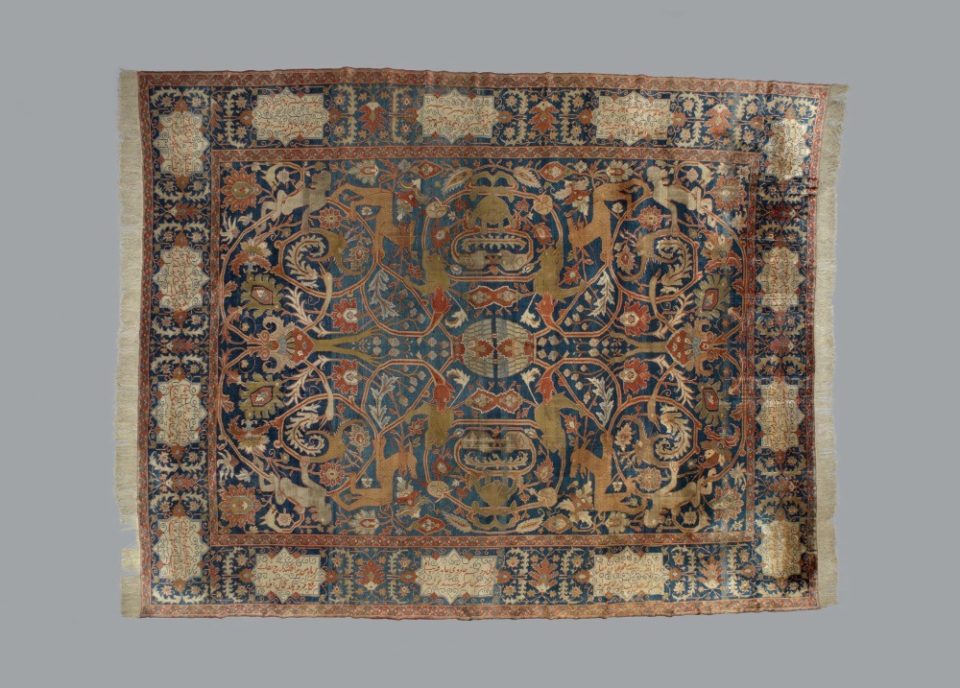The Local newsletter is your free, daily guide to life in Colorado. For locals, by locals.
This month, the Denver Art Museum debuts an exhibition that’s unique in that the functional pieces it features are, at first glance, not so different from items many of us have in our own homes. Rugged Beauty: Antique Carpets from Western Asia, on view December 18 through May 28, 2023, showcases more than 40 rugs with the rich colors, symbolic motifs, and intricate patterns seen in many traditionally designed carpets today.

What makes these pieces different from those so widely available now, however, is that these are the original designs that have inspired so many replicas over time. Dating from the 1500s to the 1900s, these antiques feature traditional materials, colors, and designs that are closely tied to the ethnicities and geographic locations of their makers. Most have been dyed by hand, and all were handwoven using the knotted-pile weaving technique, which yields a raised surface of remarkable beauty.

“While we can study and appreciate the fascinating peoples and cultures in West Asia that produce these sublime rugs, it is the beauty of the rugs that speaks directly to us,” says Paul Ramsey of Denver’s Shaver-Ramsey Fine & Custom Rugs, who provided his expertise for this exhibition. “Rugs from West Asia—primarily from Iran, Turkey, and the Caucasus—are likely among the most beautiful objects ever created by humans. Perhaps it is the play of light on the piled surface, the richness of the colors from the natural plant and insect dyes, or the compositions integrating the multilayered patterns. The personal experience of beholding a beautiful rug enchants each of us in our own way.”

The exhibition—which gathers objects from the Denver Art Museum’s permanent collection, the Textile Museum in Washington, D.C., the Saint Louis Art Museum, and local private collectors—is organized into three thematic sections: rugs created by nomadic and seminomadic makers, court and commercial workshops, and regional cottage industries. The first highlights objects created by makers who followed seasonal migration routes as they tended to their livestock, including sheep, which provided wool for portable textiles like saddle and salt bags, bedding, and baby cradles. The second section—which includes three rugs dating back to the Safavid Dynasty (1501–1736) in Persia—features fine pieces inspired by royal textiles, ceramics, metalwork, book illuminations, and architectural decoration. And the final section celebrates homemade carpets designed by women, who would often create small cottage industries in their villages and sell their works in local marketplaces.

For those looking to dive deeper into the art and craft of rug-making, a display area in the Nancy Lake Benson Thread Studio offers an opportunity to study the techniques used to create the rugs on display and to give knotting and weaving a try firsthand—an endeavor sure to enhance appreciation of the antique objects featured here, and the rugs we live with each day at home.
If you go: Rugged Beauty is presented in the Avenir Textile Art and Fashion galleries on the sixth floor of the Martin Building and included in general admission.








